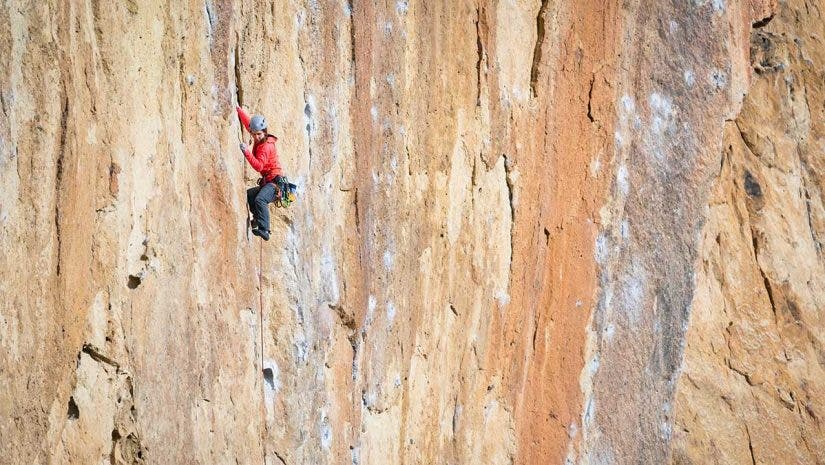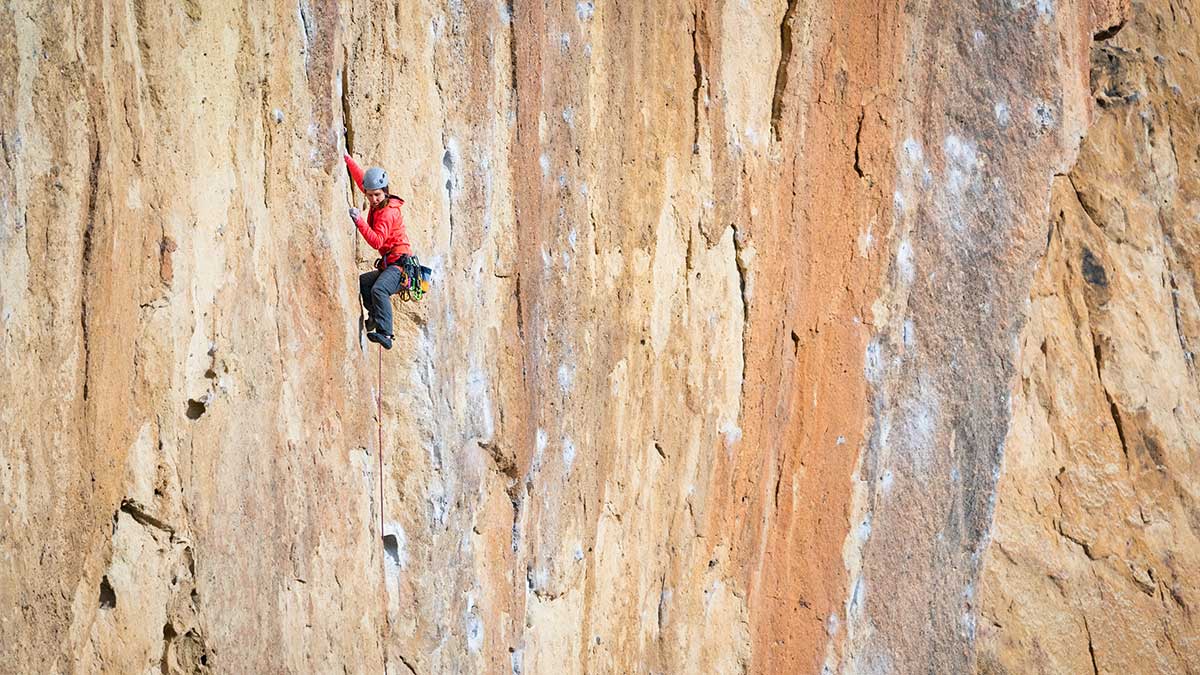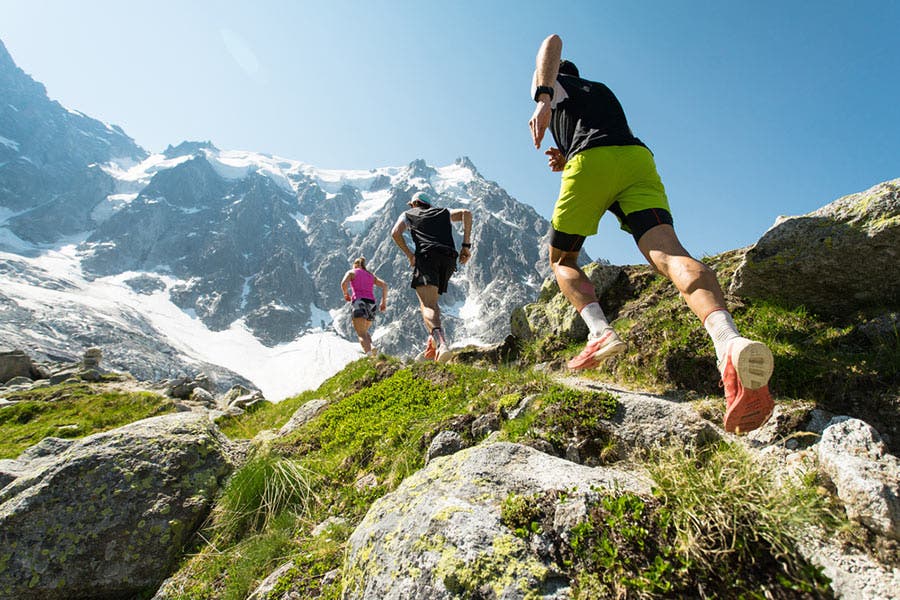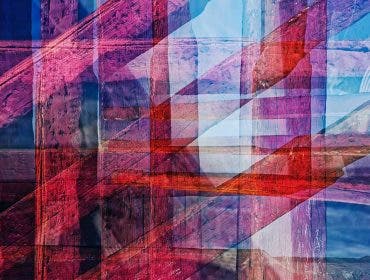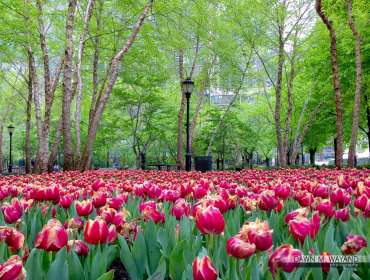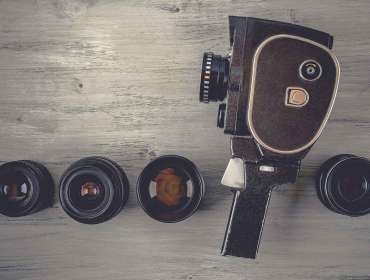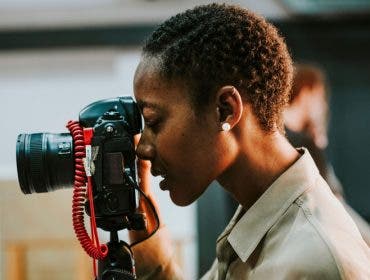Adventure photography opens up a whole new world for any budding or professional photographer. It involves featuring a wide variety of subjects, stunning landscapes, and all sorts of heart-pounding situations, making it a fun way to mix your passion for photography and adventure.
Anybody can get into this type of photography as long as they’re well prepared for adventure and challenging shooting situations. It’s well worth it for all the take-home memories, unforgettable experiences, and remarkable adventure shots.
Essential Gear for Adventure Photography:
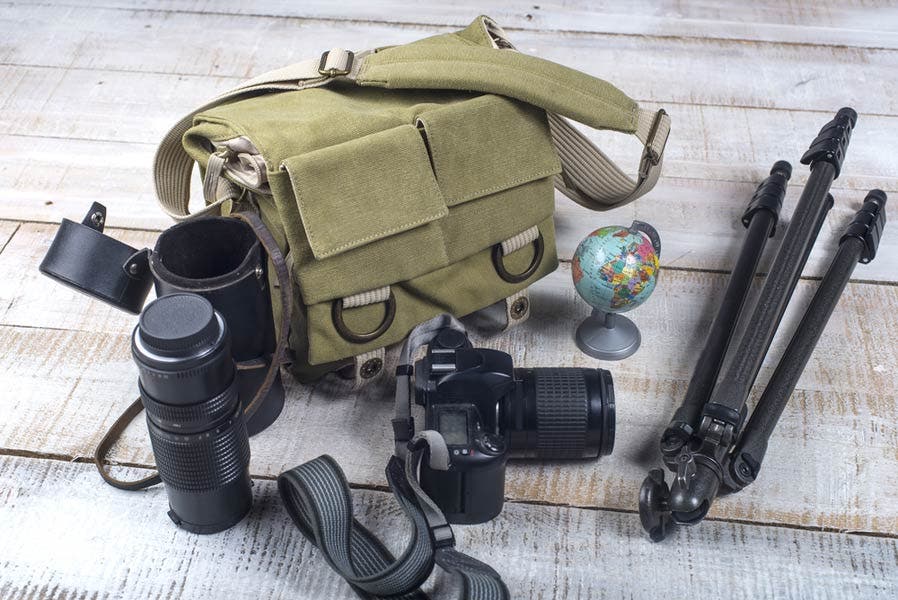
- Camera
- Lenses
- Memory Cards
- Batteries
- Tripod
- Power Source
- Waterproof Bag
Camera
What would a photographer do without their camera? There are many kinds to choose from, depending on your needs and preferences. Check out the different types of cameras and their characteristics below:
DSLR
DSLRs, or digital single lens reflex cameras, leads the pack when it comes to professional cameras. It’s not always the best choice for adventure photography as it can be very bulky and difficult to lug around on long trips. However, DSLRs offer impressive megapixels, large and powerful sensors, full manual controls for optimum image enhancement and customization, and a wide variety of interchangeable lenses. If you have the budget to spare, a great camera for fast-action shooting would be the Canon EOS 1DX Mark III. It has a highly durable magnesium alloy body that is both dust- and water-resistant, plus it offers up to 20fps burst rate.
Mirrorless
Following the DSLR, mirrorless cameras are becoming more and more popular these days. The two cameras are very similar, but the mirrorless camera has fewer lens choices as of the moment and is developed without an internal mirror that DSLRs have, thus allowing it to have a lighter, more compact frame. It doesn’t compromise image quality and camera performance, however. For instance, the Panasonic Lumix DMC-G7 is capable of capturing 4K videos and 16-megapixel photos, and even comes with a 4K Photo function that allows you to save a single image from a 4K video shot at 30 frames per second, so you don’t miss important moments.
Compact Digital Camera
Compact digital cameras, also known as point-and-shoot cameras, are somewhat capable of capturing high-quality snapshots. It’s the go-to choice for those who can’t afford to spend on more professional cameras or prefer pocket-sized gear but want higher resolution images than those offered by smartphone cameras. The Ricoh GR III is not only affordable, but it also offers in-camera Shake Reduction and is very reliable in producing sharp and vivid adventure photos.
Mobile Camera
Mobile camera phones are undoubtedly the easiest to bring with you for adventure trips. After all, you already use your phone for pretty much everything and probably can’t do without it. It helps if your phone already has a powerful, high-megapixel camera built into it. You even have the convenience of touching up your images with a few taps through editing applications.
The only downsides are that phone cameras have a limited image resolution that’s much lower than professional cameras and don’t offer full manual setting configurations yet. But if it’s all you have, they’re still great for capturing adventure snapshots for social media sharing and small photo printing.
Action Camera
The action camera category, popularized by the popularity of the brand GoPro, is perfect for thrill-seekers and serious adventurers. They’re versatile, lightweight, durable, and mountable on virtually any surface—your car, bike, or even your helmet. With the kind of wide-angled first person FOV photos and videos that it captures, your viewers will be able to truly immerse themselves in your adventure shots. Right now, the GoPro Hero10 Black is a very popular choice for its high-quality imaging and excellent stabilization technology.
Drone
Shooting with a drone is usually more expensive, but it yields breathtaking and cinematic aerial shots. Because it is capable of capturing wide-angled shots several meters above the ground, you can capture an entire area or scene from a bird’s perspective in one shot. Depending on the drone, you may also have the option to make it follow you and take photos of you while you travel in a moving vehicle, ride a bike down a steep path, and more.
Choose a drone that has a built-in HD camera, superior gimbal stabilization, and an array of intelligent flight modes that will allow you to take different types of shots from different perspectives. The DJI Mini 3 Pro is a great option, as it features a sophisticated obstacle sensing system, 4K UHD video recording capabilities, and even a gesture sensing mode that allows you to control the aircraft (and its camera) through simple hand gestures.
Lenses
Different lenses allow you to take various shots—zoomed in, close-up, macro, you name it. There are a whole lot of lenses to choose from, each offering a particular focal range or length. For general adventure trips, the more affordable option is to go for a good walkaround lens for your camera, preferably an ultra-wide to normal zoom lens for a good variety of focal lengths. If you want to get truly amazing shots, considering purchasing lenses that are specifically recommended for sports photography, as they would give you the best functionality for what you need with adventure shots.
In case you want a longer reach, a telephoto prime lens offers a fixed focal length but delivers tack sharp results. You may have fewer options for mobile, action, and drone cameras, and none for some point-and-shoot cameras. Then again, your kit lens may already be enough to help you achieve amazing adventure photos.
Memory Cards
Longer trips mean more pictures. And if you’re taking time lapse shots and videos, you’ll run out of space on your memory card even faster. What’s the fun in adventure photography if your shots are greatly limited? Avoid frustration and maximize your adventure by keeping at least one spare memory card in your bag. The Lexar Professional UHS-II memory card, for example, has full compatibility and offers ultra-fast transfer speeds for high-speed shooting and full HD video recording.
Batteries
Extend your shoot time by carrying a few spare batteries at all times. Compact rechargeable Lithium-ion batteries have high capacity for long operations without affecting your camera’s memory. You can simply purchase duplicates of the battery that you already have, since they’re usually brand and model-specific. Having extras allow you to charge one while using another.
Tripod
A tripod is a photographer’s best friend, but even more so when doing outdoor photography. It stabilizes your camera and keeps your shots as sharp as possible. The Vanguard VEO 3T+ is great for time-lapses and long exposure shots, as it can provide ease in achieving shots from different perspectives with its integrated and fluid panning and tilting movements.
Portable Power
A portable power source allows for longer, worry-free shooting. It may be optional, especially considering the price of these babies, but it’s a life-saver in case you plan to visit remote places with no socket adaptors or even any electricity. Easily charge your devices with a safe and reliable portable power source like Togo Power Pioneer 330, which is a good example of a battery pack that offers high power and protective circuits for optimum device charging.
Waterproof Bag
A waterproof bag can keep all your gadgets safe, especially during water rafting, kayaking, and other water adventures. Something like the K&F Concept waterproof backpack can be well worth the investment as it is designed to be as lightweight as possible while ensuring that no water can seep in, thereby keeping your personal items and devices perfectly protected from moisture. It’s definitely a must-have if you can’t afford to surrender your photography equipment to a watery death.
10 Tips for Capturing Stunning Adventure Photography
- Choose “photogenic” adventures
- Do your pre-trip research
- Pack light
- Always be prepared to shoot
- Mind your composition
- Explore different perspectives
- Capture emotion
- Create a sense of scale
- Inspire envy and encourage wanderlust
- Enhance your adventure shots
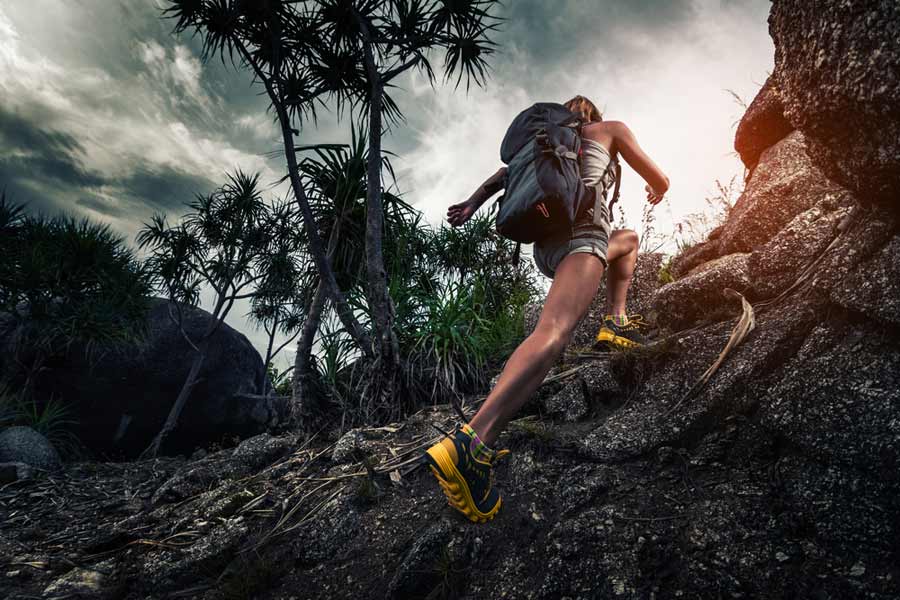
Choose “photogenic” adventures
This may seem like a strange tip, but the type of adventure matters greatly if you want to capture spectacular photos. Think about the places you want to conquer and the activities you want to experience. Then, evaluate how “photogenic” these adventures would be. Most professional photographers can get a good shot out of any scene or location, but if you’re more of a beginner, you want to choose the activity and location to ensure that you get the best results
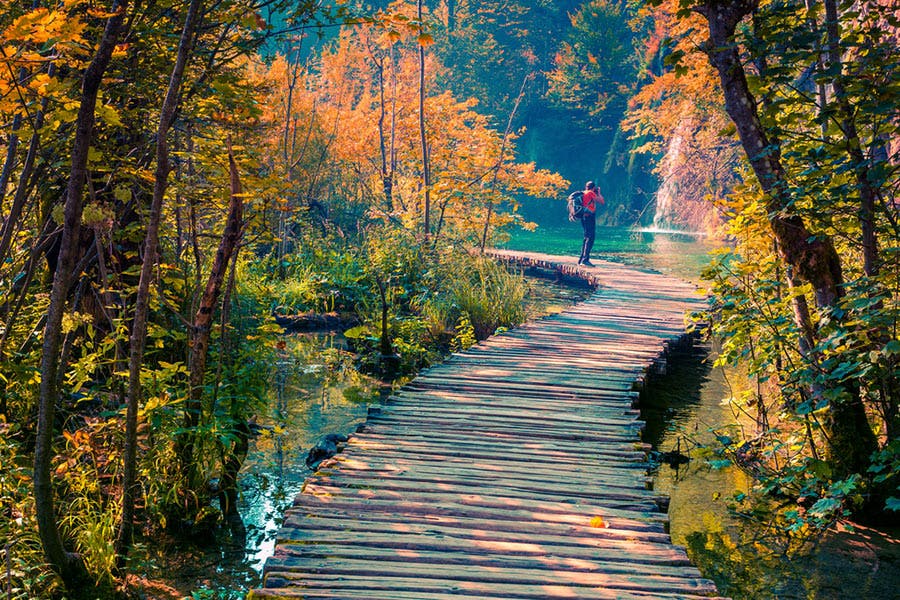
Do your pre-trip research
Shooting outdoors and on the go can present can present many challenges. You may not know which camera, lenses, and other equipment you may need depending on the place, weather, and ground conditions. You may also need to know which places are worth visiting and photographing.
Before going on the trip, do some research to gain a better understanding of what the environment will be like and what to expect from the locals. You can consult reliable online forums and ask friends who have been to the area. Also, as soon as you arrive, take the time to scout the place so you can evaluate the shooting conditions. At that point, you can plan your shots and determine safe areas for camera setup.
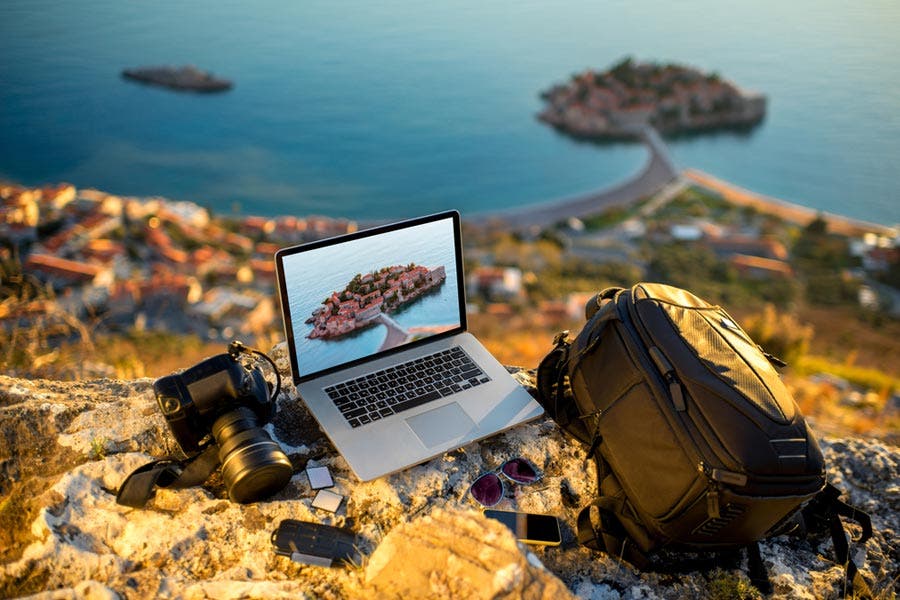
Pack light
Going on an adventure won’t be as enjoyable when you have to haul 50 pounds of gear on your back wherever you go. So, while this may be obvious, it’s important to remember that you need to pack light. Only bring what you will need, and nothing more.
Once you have a better idea about where you’re going and what you’ll be doing, you’ll have an easier time choosing which equipment to bring and which ones you can do without. Of course, you’ll need your trusty camera, which is hopefully lightweight and compact enough so you can have enough room for other essential items. Based on your pre-trip research, plan out what shots you want to take to help you decide which accessories are absolutely essential to bring.

Always be prepared to shoot
Some photographers are anxious about keeping their cameras on due to fear of running out of battery. However, doing this may cause you to miss out on a few good shots. You’ll never know when the perfect photo opportunity will arise. Keep your camera on and always be prepared to aim. Just keep at least one spare battery, use a lens cap to protect your lens glass, and keep your eyes peeled for the right moment.
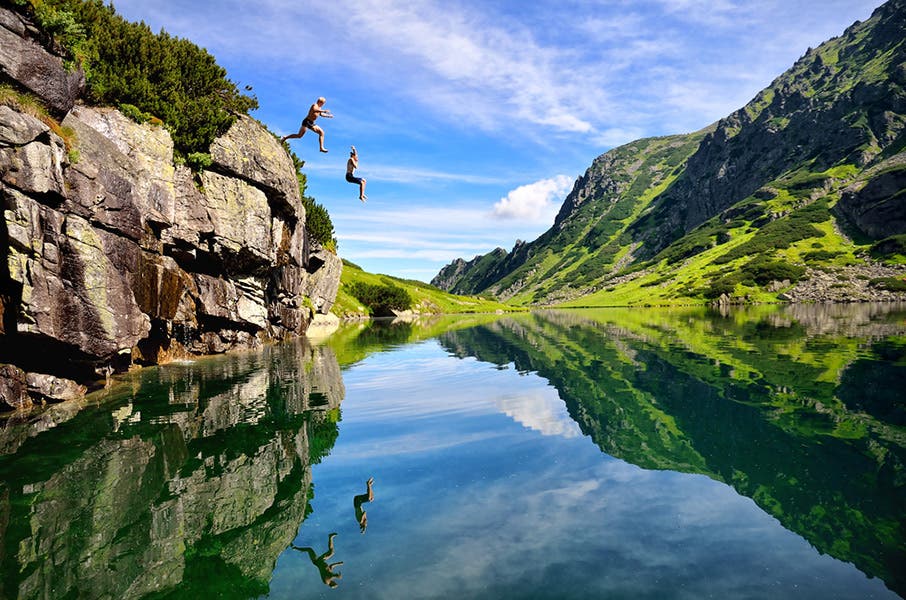
Mind your composition
It may be difficult to even think of observing compositional rules when you’re on an adventure. However, if you want to take stunning—and maybe even award-winning—adventure shots, you’ll need to put an effort into improving your image compositions.
Even if you forget a few guidelines, you’ll only need to remember one important thing: the main subject of the photo should be the main point of interest. This allows your viewers to really understand and appreciate your photo. Simply place your subject in strategic points of your frame (front and center or by rule of thirds) and add supporting elements that will help draw focus to your main element.
Explore different perspectives
Adventure photos are fun to capture and observe. They are all made up of diverse sceneries, people, and memorable experiences. However, taking on a fresh point of view will add more interest to your photo and make it more unique. Instead of shooting at the usual eye level, take your photos from a lower or higher perspective and at different angles.
Experiment and test what works for your subject and composition.
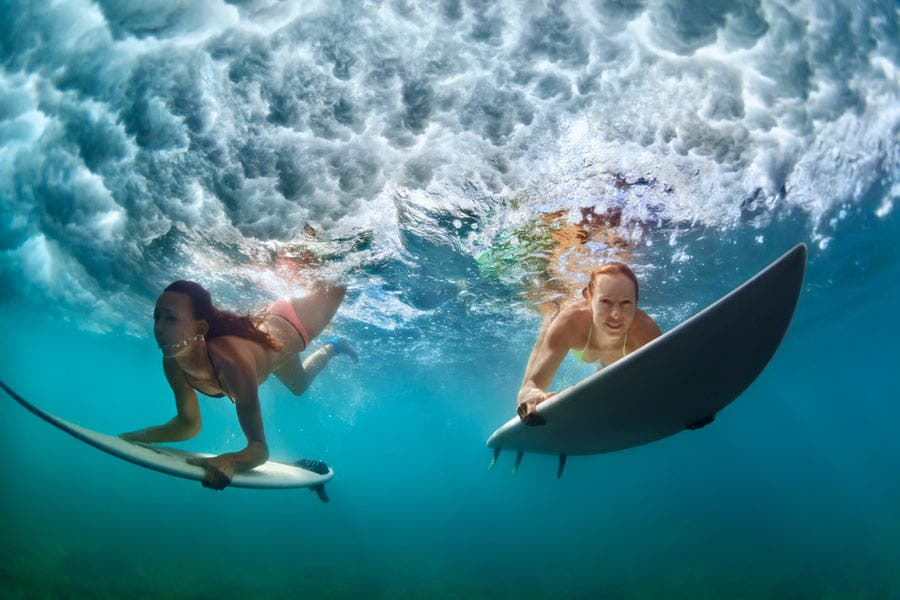
Capture emotion
As with any photo that features a human subject, it’s important to capture their emotions to add an extra layer of interest and meaning to the photo. Whether it’s a look of concentration, a joyful laugh, or a look of frustration, make sure to catch those facial expressions in the photo to give your adventure photos more depth.
Luckily, this is pretty easy to achieve. Just live in the moment and take photos of yourself or your travel buddies as you embark on various activities. You’re sure to catch every emotion organically without having to actively wait for them.
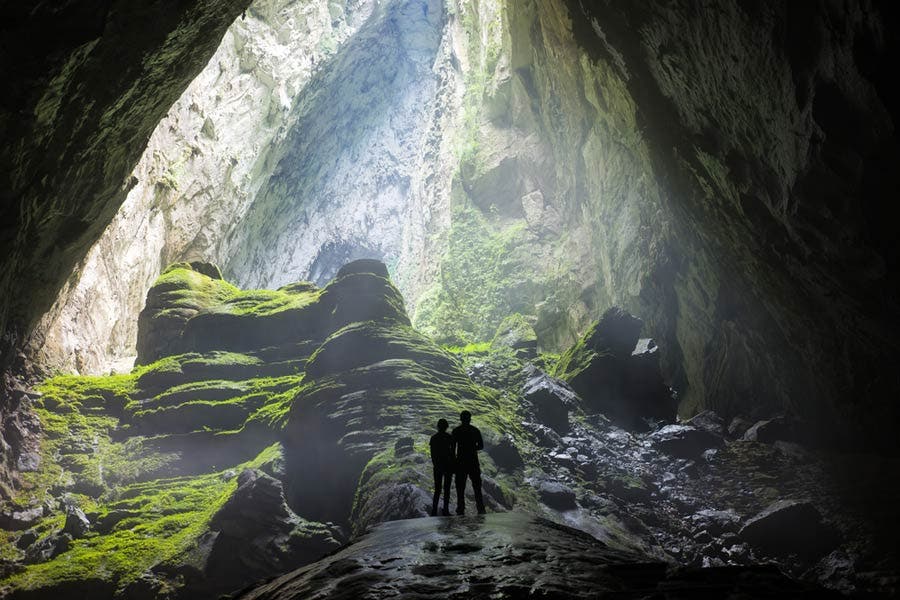
Create a sense of scale
Maximize the use of scale in your photos. By doing so, you give your viewers a better idea of the surroundings. Plus, you provide a size comparison between the landscape and an object of a well-known size. For example, a mountain peak in a photo may look small, but including another subject—such as a human—in the shot gives the viewer an idea of how tall the mountain peak truly is.
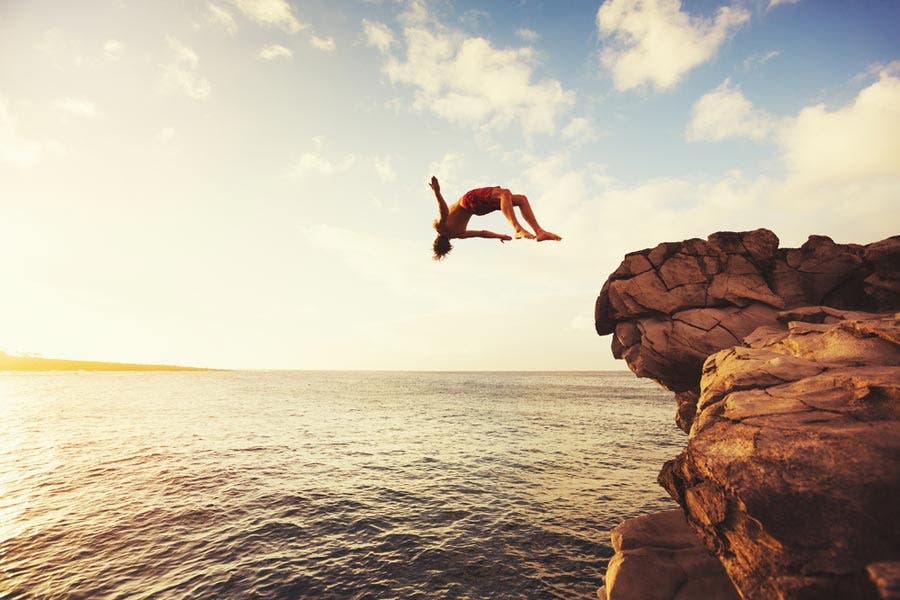
Inspire envy and encourage wanderlust
One of the main goals of adventure photography is to encourage people to break out of their comfort zones and explore new places by documenting memorable experiences and promoting the beauty of exciting locations. If your photo has the ability to make people thirst for new destinations to explore and new activities to experience, then you know that you’ve succeeded in creating a great image. The true measure of how effective your photos truly are is if they are able to make people envious and inspire a sense of wanderlust.
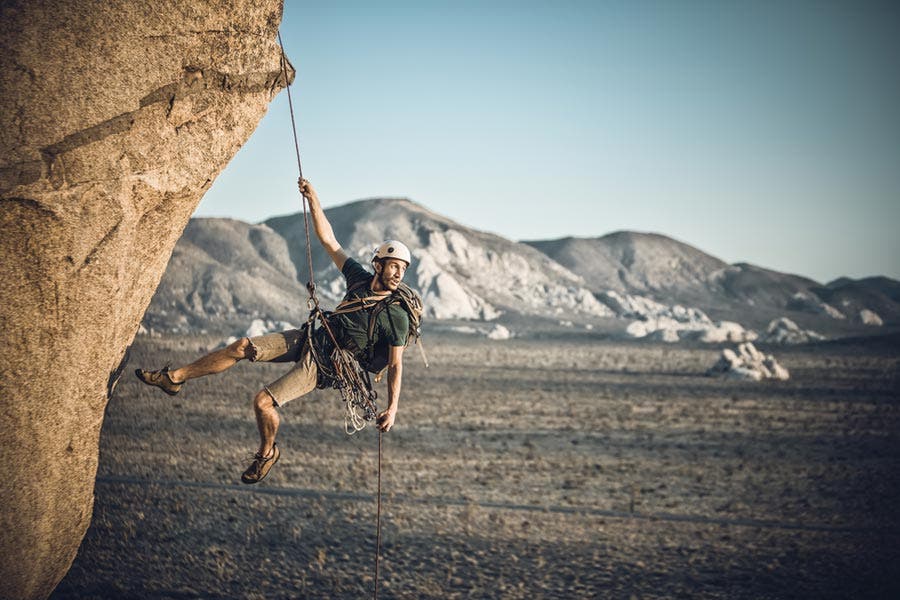
Enhance your adventure shots
Adventure photographers shoot in digital RAW format most of the time, so they can preserve as much image quality and information in their images. Compared to compressed JPEG photos, RAW makes enhancement during the post-production process a lot easier. The image resolution is much larger, so minor cropping won’t greatly affect the resulting resolution. At the same time, image exposure tweaks will look a lot more natural. Keep in mind, however, that the goal of post-production is to enhance the photo, not exaggerate it.
If you’re looking to get into this exciting photography niche on a more professional capacity, check out these adventures with Alex Stead and Ryan Field:
